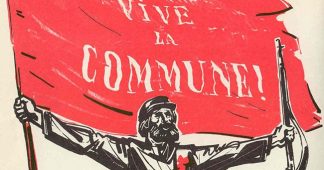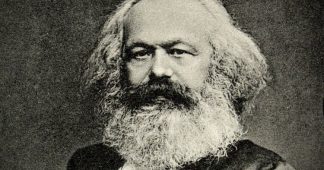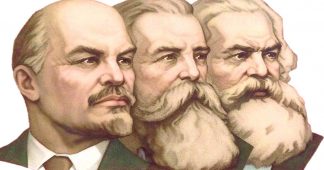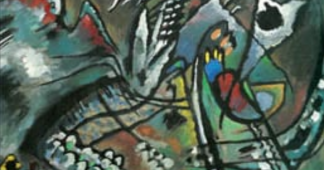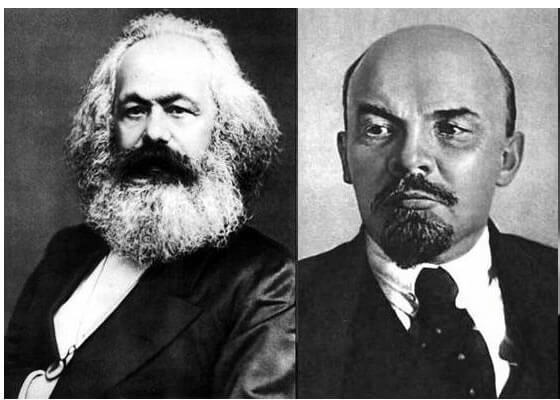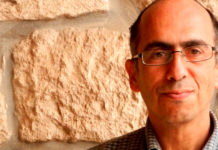On the 100-year anniversary of the great Russian Revolution, it is necessary to study and draw all the lessons of its main achievement: the building, after a year and a half of seizing power, of the III International, the Communist International. It was the most advanced attempt to form a world revolutionary leadership and the first to understand this leadership as a centralized organization of revolutionary parties to develop the socialist revolution and seize power in all countries of the world.
By Alicia Sagra
Founding the III International was one of the constant worries of Lenin. Trotsky said that in 1915, when the Zimmerwald Conference took place, where the few socialists against the war gathered, Lenin was so harsh with the reformists – despite accepting to sign a declaration against war with them – because his main worry was the International. Trotsky said that Lenin set the first stone of the III International at that moment, and his intransigence with the reformists was due to his conception of revolutionaries having to found their own party, and the reformists, if they wished, could form theirs.
Why this obsession with the International?
As the Marxist intellectual George Novack says, this is not a dogma, not even a sentimental dream. Internationalism is based in the world character of the capitalist economy. Unlike feudal societies, capitalist society is not fragmented and isolated. Capitalism, since its beginning, run on world basis; it extended the world market and imposed the world labor division. No capitalist country can live isolated from the world, which deepened greatly with the emergence of imperialism in the early XX century. This generated the internationalization of class struggle and posed the great need of an international organization of workers, to be able to advance in the tasks to defeat imperialism and build socialism worldwide.
The first great step
The first attempt was in 1864, with the emergence of the First International of which Marx and Engels participated. This was the first step to unite workers forces beyond frontiers. It was very important to face the policy of the European bourgeoisie, which used the workers of one country to break the strikes in another. However, it was fragile due to the incipient degree of organization of the proletariat, at the time. It was not a party, but a united front of organizations and workers’ leaders.
It had a clear class nature, but it had no clear ideology. Marx and Engels’ followers, defenders of scientific socialism, were part of it, as well as two sectors of Anarchism expressed in Proudhon and Bakunin. The theoretical-programmatic differences were strong when the First International had to face its first great revolutionary challenge: the Paris Commune of 1871.
The crushing defeat of the Commune caused great demoralization, at the same time that it confirmed Marx and Engels’s standings. The lessons of the Commune made the influence of the founders of scientific socialism to grow, together with the disloyal activities of Bakunin, which led to the dissolution of the First in 1972.
The Second Attempt
In 1889, there was a great advance in the building of the II International, the Socialist International, no longer as a united front but as a federation of Marxist parties, which according to Trotsky had the great merit of educating millions of workers in Marxism.
However, it was destroyed as a revolutionary international in 1914, when the great parties that belong to it supported their imperialist governments in the First World War.
The Consequences of the Great Betrayal of 1914: the Role of Centrism.
As it could not be different, the effect of this betrayal was crushing. The Socialist International, which had educated millions in proletarian internationalism, broke its principles and voted in favor of war credits for each imperialist country. In other words, it called German workers to kill French and English workers in the front and vice versa. How did this happen?
The non-centralized regime of the Second allowed the existence of three wings within its main party, the German one, which also reflected in the International. The right wing, represented by Bernstein and Vollmar, relying on workers privileged by the emergence of imperialism; the leaders of the center, leading the party as a whole, were Kautsky and Bebel; and the left, Rose Luxemburg, Karl Liebknecht, Clara Zetkin…
Along the different congresses of the German party and the Second, the center and the left voted together and the right was defeated. Thus, in the Basel Congress of 1912, the International voted to develop great agitation against the war, and in case it was declared one should “use all strengths of economic crisis caused by the war to rebel the masses and precipitate the downfall of the capitalist system”. (Basel Manifesto)
The International deployed a great agitation campaign in all countries but did not manage to stop the war. Things changed: the centrists joined the right and voted in every country (with the honorable exception of the Russian and Serbian parties) in favor of war credits. In other words, in favor of each of the imperialist governments in their countries.
The great betrayal took place because the right received the support of the centrists, not because it became the majority. This tragically verifies Lenin’s definition that the center is more dangerous than reformists themselves, because the latest present themselves revealing their faces, so it is easier to face them.
The Controversies on the Third International
The betrayal of the Second was tremendous, but this does not mean this became evident for the rank and file of the International. On the contrary, the broad majority followed their leaders and fell into patriotism and defense of their own country in the imperialist war. This influenced the heterogeneous minority of leaders against the war.
Most of these leaders believed one could not abandon the Second, one had to wait for the war to end to return to normal. Many of them, mainly those who belonged to greater parties, feared the isolation that breaking with the International would imply.
The view of the revolutionary minority was different. Among them, there were Lenin and Trotsky in Russia, Rose Luxemburg and Karl Liebknecht in Germany, Kristian Rakovsky in Rumania, and John Maclean in Scotland. On this sector, Trotsky said, “We, revolutionary socialist, did not want the war. However, we do not fear it. We have not surrendered to desperation due to the fact the war broke the International. History took care of it.
The revolutionary epoch will create new forms of organization emerged from the never ending resources of proletarian socialism, new forms that will be in at the level of the greatness of the new tasks.” [1]
However, this agreement on the irreversible bankruptcy of the Second did not imply an agreement regarding the Third.
Rose Luxemburg did not see the essential was related to new programs or a new International built by “dozens of people,” but by “actions of millions of men.” Thus, she opposed the “revolutionary defeatism” proposed by Lenin and stood by “the struggle against war,” where the “conscious will of the masses” [2] would develop.
Lenin had no doubts, “The Second International is dead, defeated by opportunism. Down with opportunism and long live the Third International, disentangled from the renegades and opportunism.” [3] Although aware of the difficulties, he posed that, to build the International, it was necessary for the parties to want to do it. The Bolsheviks were willing to do so. But, if necessary, they would remain in the old International until basis were built in different countries for the new one to be found. [4] He was mainly waiting for the evolution of the Spartacus League led by Rose Luxemburg.
Trotsky was getting closer to Lenin, although he did not answer his demand to adopt the “revolutionary defeatism” policy.
The Zimmerwald Conference
It was a meeting of the few leaders of the II International against imperialist war. Trotsky described it,
“In the summer of 1915, there arrived in Paris the Italian deputy Morgari, the secretary of the Socialist faction in the Rome Parliament, and a naive eclectic, who had come to secure the participation of French and English socialists in an international conference. (…) The organization of the conference was in the hands of the Berne socialist leader, Grimm, who was then trying his utmost to raise himself above the philistine level of his party, which was also his own inherent level. He had arranged to hold the meeting in a little village called Zimmerwald, high in the mountains and about ten kilometers distant from Berne. The delegates, filling four stage-coaches, set off for the mountains. The passers-by looked on curiously at the strange procession. The delegates themselves joked about the fact that half a century after the founding of the First International, it was still possible to seat all the internationalists in four coaches. But they were not skeptical. The thread of history often breaks then a new knot must be tied. And that is what we were doing in Zimmerwald.
The days of the conference, September 5 to 8, were stormy ones. The revolutionary wing, led by Lenin, and the pacifist wing, which comprised the majority of the delegates, agreed with difficulty on a common manifesto of which I had prepared the draft.
The manifesto was far from saying all that it should have said, but, even so, it was a long step forward. Lenin was on the extreme left at the conference. In many questions he was in a minority of one, even within the Zimmerwald left wing, to which I did not formally belong, although I was close to it on all-important questions.
In Zimmerwald, Lenin was tightening up the spring of the future international action. In a Swiss mountain village, he was laying the corner-stone of the revolutionary International. (…) Liebknecht himself was not in Zimmerwald; he had been imprisoned in the Hohenzollern army before he became a captive in prison. Liebknecht sent a letter to the conference which proclaimed his abrupt about-face from pacifism to revolution. His name was mentioned on many occasions at the conference. It was already a watchword in the struggle that was rending world-socialism.
The conference at Zimmerwald gave to the development of the anti-war movement in many countries a powerful impetus. In Germany, the Spartacists expanded their activities. (…) The essentially unimportant differences that still separated me from Lenin at Zimmerwald dwindled into nothing during the next few months.”[5]
During the Conference, Lenin developed a violent combat against centrists, despite being an evident minority (8 out of 38 delegates). He knew his proposal could not win the Conference, but he wanted to win the best cadres of the II International for his stand. Thus, Trotsky states, “In Zimmerwald, Lenin was tightening up the spring of the future international action”. And according to his own statement, himself was won, along the following months, for most of Lenin’s proposals.
Coherent with this policy, Lenin demanded that, along with the common Manifesto, a resolution should be presented by Radeck in name of the “Zimmerwald left”. It posed that “Rejection to the war credits, separation of the socialist ministers from the bourgeois administrations, the need to unmask the imperialist nature of this war in the parliamentary tribune, in the legal and, if necessary, illegal press columns, the organization of demonstrations against the governments, propaganda in the trenches in favor of international solidarity, protection of the economic strikes attempting to transform them into political strikes, civil war and not social peace.”
The Triumph of the Russian Revolution and the Outburst of the German Revolution
Since 1915, the situation began to change and mobilizations against the war in Scotland, Berlin, and Romania took place. The Bolsheviks’ work developed by Trotsky and Rakovsky for a new International. Contacts were established in France, Sweden, the US, and Switzerland. However, the great leap took place with the triumph of the October 1917 revolution, where the Bolsheviks showed it was possible. As Rose Luxemburg said, “they dared”.
However, the Bolsheviks knew this was only the first step. Without the development of world revolutions, it would be under threat, and the building of the Third was still the main task. So, in midst of the challenges of power, peace signing, advancing in responding to hunger, ending inequalities and oppressions, they continued privileging the task of building the International. They sent the best propagandist to diplomatic posts to develop this work in the countries that acknowledged the new state. At the same time, they dedicated to carrying out intense political work over the war prisoners of the Tsarist army. From this work, led by the Polish revolutionary Karl Radek, the Hungarian, the Yugoslavian, the Bulgarian, and the Czechoslovakian Communist groups emerged and became part of the foreign sections of the Bolshevik party. And, little by little, they returned to their countries to build and participate in the revolutionary processes exploding all over Europe.
This work advanced, but to Lenin, the conditions were not ready yet to carry out the great task. All these groups were very small and very dependent of the Bolshevik party.
The outburst of the German revolution, in November 1918, opened the door for these conditions. In December of the same year, the Spartacus League of Rose Luxemburg joined the Internationalist Communists of Germany, giving origin to the German Communist Party. Lenin was waiting for this, and he said, “When the Spartacus League became the German Communist Party, the foundation of the III International, the Communist International, truly communist, truly international, became a fact. Formally, the III International is not yet consecrated, but the III International exists in reality from this moment on.” What Lenin did not know at the time is that the January 5 insurrection had taken place, and the two great leaders of the Communist party, Rose, and Liebknecht, had been murdered.
January the 24th, the Pravda published the news of the murder and summoned an International Socialist Conference. The summons was signed by Lenin and Trotsky, the Russian Communist Party, the German Communist Party, the Finish Communist party, the Balkans Socialist Federation, the North American Socialist Workers’ Party, and the foreign bureaus (in Russia) Polish, Hungarian, Austrian, and Latvian Communist party.
The Founding of the III International was not Easy
March 2, 1919, in midst of the civil war, Lenin opened the International Conference honoring the memory of Rose Luxemburg and Karl Liebknecht, “the best representatives of the Third International.” The maximum expression of the importance of this meeting for the Bolsheviks is that Trotsky left the war front to participate in the Conference.
Many international delegates did not arrive or arrived late. A great part of the present delegations was part of the foreign sections of the Russian party. The Parties present which had an existence of their own – the German, Polish, Austrian, and Hungarian, were very small regarding the Russian, which had 500 thousand members at the time. All of this supposedly made the foundation of the Third International a mistake, because it was not representative enough to do so. However, we consider the history proved the opposite.
In this conference, which lasted from March 2 to 6, there was a report on the German revolution and the situation of the Russian state. Lenin’s resolution on bourgeois democracy and the dictatorship of the proletariat was adopted, but the main point was the discussion on whether to found the Third or not, and it was a harsh debate.
The German delegate stood for Rose’s mind that it was not the time yet, that it would be very weak and the only strong party was the Russian one. One can imagine the influence of the opinion of a great leader that was recently murdered. Zinoviev, one of the Bolsheviks’ great propagandists, answered, “We do not wish to work with the feeling that we are very weak; on the contrary, we must be invaded by the feeling of our strength, of the conviction that the future belongs to the III International (…) After a mature reflection, our party proposed to immediately build the III International. The entire world would see that we are armed, organizationally and intellectually.”[6]
March the 4th, with the abstention of the German delegate, the voting is favorable and the III International is founded.
Life verified how correct the Bolsheviks’ were. Days later, on March 21, the power was seized in Hungary, verifying Lenin’s view on the revolutionary process in Europe. Before the Second Congress (1920) the Italian Socialist Party, the Norwegian Workers’ Party, and the Socialist Left Hungarian Party adhered to the International.
Four Congresses that Left Great Programmatic Frame
The second congress (1920) took place in midst of a great growth. From the influence of the Russian Revolution, parties of different countries broke with the Second and adhered the Third. They mostly did so honestly, but opportunist leaders who did not want to lose their rank and files followed this movement. This forced to “separate the wheat from the chaff,” and the second congress adopted the 21 conditions to remain within the International. The focus was in the struggle against reformism and the vindication of democratic centralism.
Most of the parties accepted the 21 conditions, but some, like the Italian, divided, and most left the International. The great fact is that, in Germany, most of the independent social democratic party adhered to the Third, united with the PCA [Communist German Party] giving origin to a great party, the Unified Communist Party of Germany.
During the Third and Fourth Congresses, the battle was against the extreme left standings, which refused to see that there was a setback in the class struggle situation. The struggle for power was not posed in the agenda but the struggle for the leadership of the working class, and the Workers’ United Front tactic is adopted.
In synthesis, throughout these four years, from 1919 to 1922, new parties were integrated to the International and several of them won mass influence. Along these four years, these four Congresses voted resolutions that are a programmatic reference and maintain their validity in the present: on bourgeois democracy and the role of revolutionaries Parliament; on the agrarian question; on unions; on methods, structure and action of the Communist parties; on women’s oppression, and on the national question.
However, this main organizational achievement of the world workers’ movement was frustrated. The combination of the defeat of the German revolution, Russia’s backwardness, and Lenin’s death set the basis for the counter-revolutionary triumph of Stalin, who first degenerated, and then (in 1943) dissolved the Third International, obeying the request of the British imperialism.
Today, we do not have this International Tool. We need to rebuild it
Today, the world is more connected than ever, by the growing globalization of the economy, means of communication, the internet, and social networks, but the workers do not have any organic unity. The struggles of the working class and the peoples of the world are equal in their objectives: against hunger, against unemployment, in defense of education and public health, against oppressions of all sort, against repression. And all of them face the same enemies: the North American and European imperialism, which own the world and its agents, the national governments.
However, these combats are not coordinated; they do not protect nor help each other. Today, we do not have this great international tool that was built in the heat of the Russian revolution.
It is easy to imagine the reinforcement of the Palestinian struggle if there were a mass International that organized a world boycott of Israel; or what could be achieved if the teachers and students’ struggles of all Latin America were coordinated; or what it would represent for the workers’ struggles against the capitalist crisis, if the International could stop all automotive or oil multinationals every time a single one of them fired a worker in any of the countries.
Without a doubt, the building of a revolutionary International is still a priority necessity. Workers achieved it with the Russian Revolution, and we lost it with the Stalinist counter-revolution. Trotsky attempted to recover it by building the Fourth International, but the Fourth does not exist today. On this subject of advances and setbacks, triumphs and defeats, Trotsky has a beautiful phrase that shows the path,
“The working class ascends drilling by itself a granite rock. Sometimes it slips some steps; sometimes the enemy dynamites the steps that have been drilled; sometimes it buries itself because the material is poor. After each fall we must stand; after each slip, we must raise again; each step destroyed must be replaced by two new.”
**
Translation: Alejandra Ramírez.
Notes:
[1] León Trotsky, La Guerra y la Internacional. [War and the International; translation in English differs from the Spanish source – our translation]
[2] Quoted by Pierre Broue, en Revolución Alemana. [German Revolution; our translation]
[3] Quoted in Rakosi’s review, Los Cuatro Primeros Congreso de la Internacional Comunista [The First Four Congresses of the Communist International – not available in English, our translation], Ediciones Pluma.
[4] Lenin, Socialismo y Guerra. [Socialism and War, 1915 – our translation]
[5] Paris, and Zimmerwald, My Life, León Trotsky. (Highlighted by us.) https://www.marxists.org/archive/trotsky/1930/mylife/ch19.htm
[6] Quoted by Pierre Broue, in La Historia de la III Internacional. [The History of the III International – our translation]
